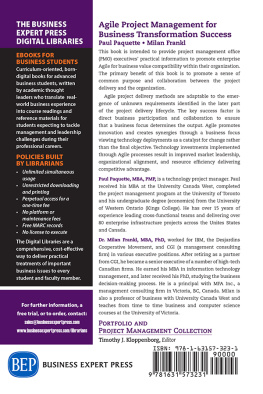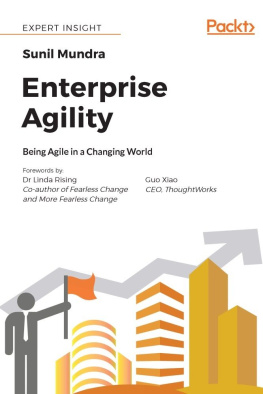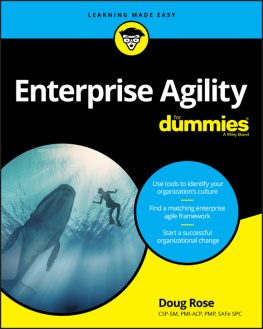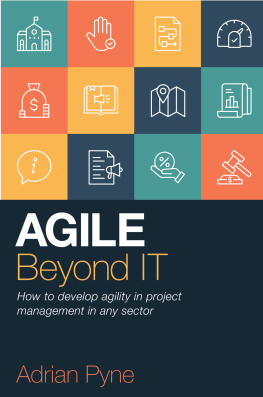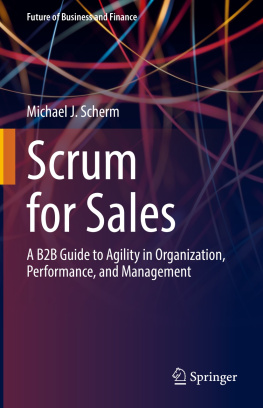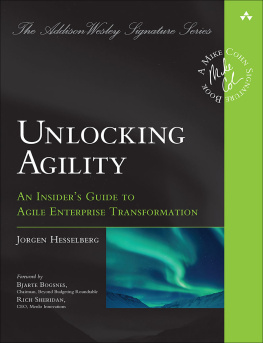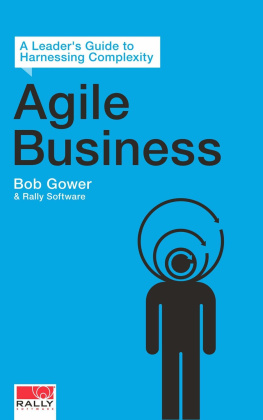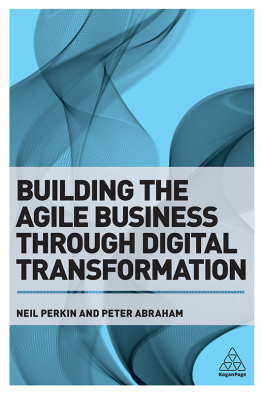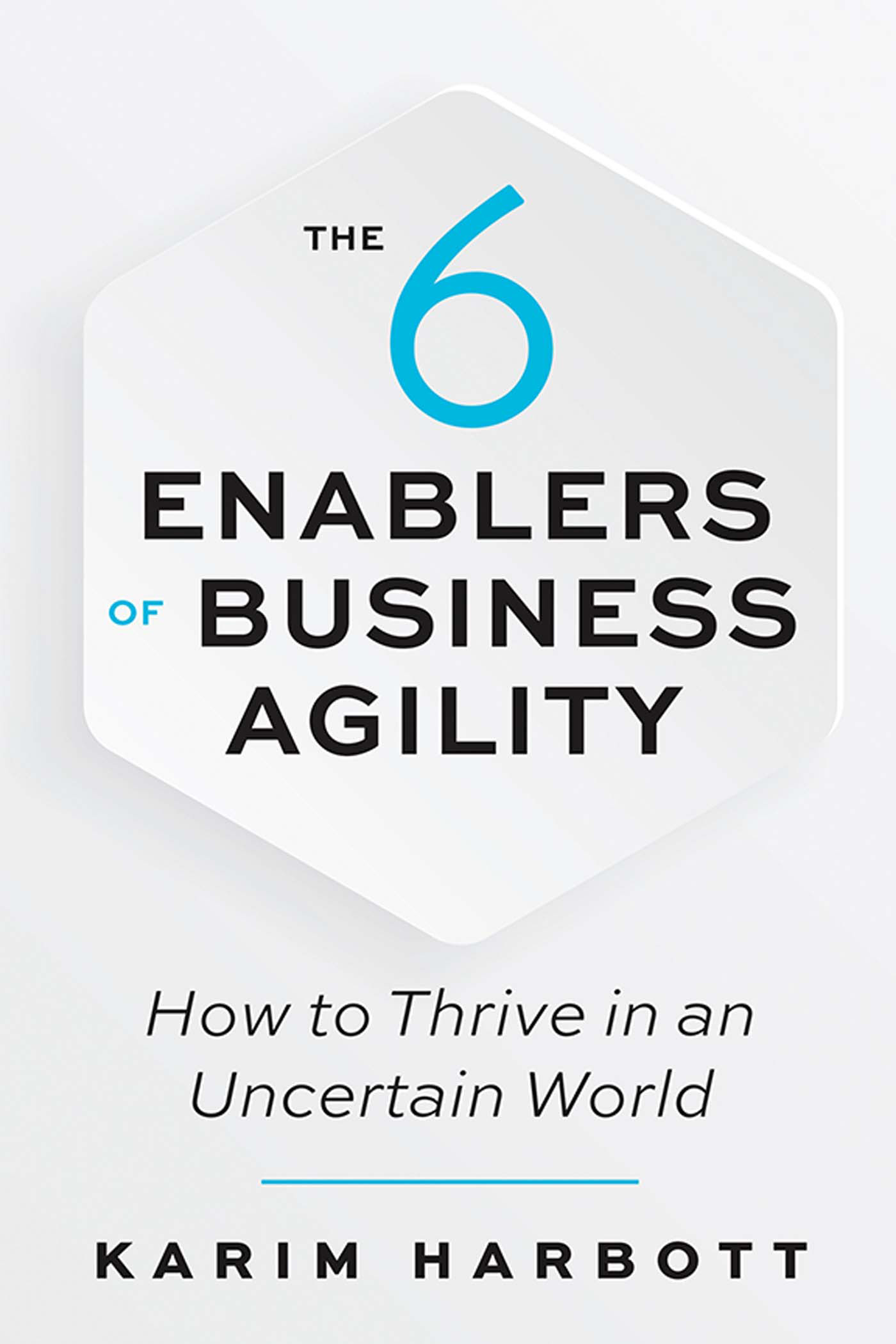Contents
Guide
Page List
THE 6 ENABLERS OF BUSINESS AGILITY
THE 6 ENABLERS OF BUSINESS AGILITY

How to Thrive in an Uncertain World
KARIM HARBOTT

The 6 Enablers of Business Agility
Copyright 2021 by Karim Harbott
All rights reserved. No part of this publication may be reproduced, distributed, or transmitted in any form or by any means, including photocopying, recording, or other electronic or mechanical methods, without the prior written permission of the publisher, except in the case of brief quotations embodied in critical reviews and certain other noncommercial uses permitted by copyright law. For permission requests, write to the publisher, addressed Attention: Permissions Coordinator, at the address below.

| Berrett-Koehler Publishers, Inc.
1333 Broadway, Suite 1000
Oakland, CA 94612-1921
Tel: (510) 817-2277, Fax: (510) 817-2278
www.bkconnection.com |
Ordering information for print editions
Quantity sales. Special discounts are available on quantity purchases by corporations, associations, and others. For details, contact the Special Sales Department at the Berrett-Koehler address above.
Individual sales. Berrett-Koehler publications are available through most bookstores. They can also be ordered directly from Berrett-Koehler: Tel: (800) 929-2929; Fax: (802) 864-7626; www.bkconnection.com
Orders for college textbook/course adoption use. Please contact Berrett-Koehler: Tel: (800) 929-2929; Fax: (802) 864-7626.
Distributed to the U.S. trade and internationally by Penguin Random House Publisher Services.
Berrett-Koehler and the BK logo are registered trademarks of Berrett-Koehler Publishers, Inc.
First Edition
Paperback print edition ISBN 978-1-5230-9005-1
PDF e-book ISBN 978-1-5230-9006-8
IDPF e-book ISBN 978-1-5230-9007-5
Digital audio ISBN 978-1-5230-9008-2
2021-1
Book producer: Westchester Publishing Services
Cover designer: Adam Johnson
For those leaders who are smart enough to know they need change, and brave enough to try.
Contents
INTRODUCTION
About This Book
Its not enough to do your best. You must know what to do, then do your best.
W. EDWARDS DEMING
Business Agility and the Organizational Operating System
Business agility is a term that is used to mean many things. Its true definition is the ability to respond quickly and easily to change in order to maximize the delivery of value to customers in increasingly turbulent business climates. It is about adapting, improving, and innovating quickly enough to stay ahead of a constantly changing curve. It is a trait that increasingly separates the most successful organizations on the planet from all the rest. When organizations achieve this trait, it looks effortless. The rapid evolution, disruption, and continuous reinvention take place with the easy grace of a cheetah twisting and turning on the plains of East Africa. The following is a story about a company that has thrived for two and a half centuries. It has done so only because its forward-thinking leaders have continually evolved the company with the changing markets.
That company is GKN, a British aerospace space company founded in 1759. What is even more remarkable than an organization that is over 260 years old is that aviation pioneers the Wright brothers did not carry out their first successful flight until 1903, a full 144 years after the company was founded. How is this possible? The answer is that GKN was not always in the aerospace business. It began life as a coal mine before becoming Britains largest producer of iron ore during the Industrial Revolution. By the start of the twentieth century, it was the worlds largest producer of fasteners (bolts, nails, and screws). Soon after that, it began making parts for automobiles, and subsequently airplanes. In 2017, GKN provided services to some of the biggest aerospace companies in the world, generated revenues of $9.6 billion, and employed 58,000 people.
Many have attempted to achieve similar levels of business agility by replicating particular tools, processes, and frameworks. What few understand is that merely adopting these ways of working without adapting the prevailing structures, policies, and mindsets of the organization is akin to installing an app designed for Android on an iPhone powered by iOS. The chosen practices are incompatible with what I refer to as the organizational operating system.
There are many great books providing details on the various frameworks, processes, and practices for increased agility. I have spent much of my career advising on their adoption. This book is different.
This book is less about specific ways of working, and more about how to create the underlying organizational operating system for business agility, a topic that is rarely addressed. In short, it is about creating the right environment for the myriad agile tools and techniques to stand a chance of working effectively, and in doing so, building organizations that are designed to thrive in an uncertain world.
Why I Wrote This Book
Many people dream of writing a book. I was never one of those people. I chose to study mathematics as my first degree, then became a software engineer largely so I would not have to write words. I continued in that vein, opting for a masters degree in innovation and entrepreneurship. Yet, in many ways, this book has been brewing in my writing-averse mind for more than 10 years. For much of that time I did not know it was going to be a bookbut in recent years it became increasingly clear that I was heading down that path. So why, then, have I done the very thing I had spent most of my career avoiding?
Well, I have been on quite a trajectory over the past 20 years. In that time, I have worked with dozens of organizations on some of the largest transformation programs in the world. I have gotten a lot wrong, I have gotten a lot right, and I have learned more than I imagined possible. I have gone from software engineer turned project manager, working in a rather traditional, 120,000-person organization, to ultimately cofounding and leading my own company, which helps leaders and entire organizations adopt modern, progressive, and often unfamiliar ways of working. I see many organizations struggling to achieve results in their journeys toward agility, and many are making similar mistakes. I therefore wish to share what I have learned with as many people as possible to make an impact. I firmly believe that writing this book is the best way to reach a wider audience, to distill many years of learning and experience, and to help people who are on similar paths.
My Two Key Drivers
When I spent some time crystallizing what really drives me and identifying the essential problem I am striving to solve, I found that it came down to two things. These two things are why I do what I do, they are why I get out of bed every morning, and they are why I created the 6 Enablers model.


